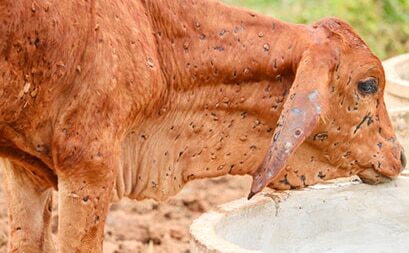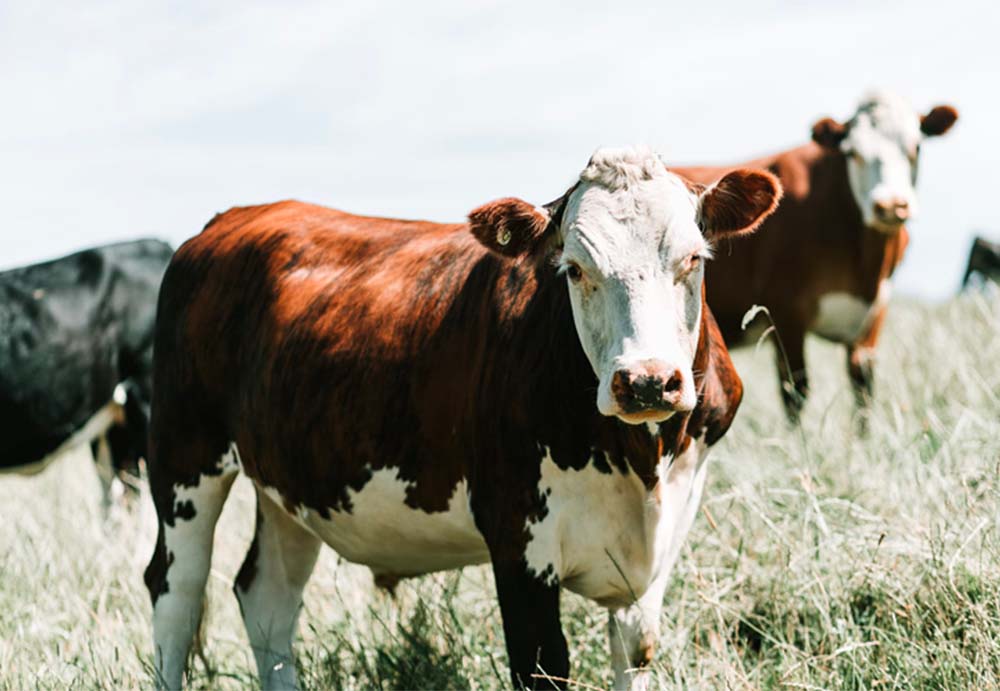What is Lumpy Skin Disease?
Lumpy Skin Disease (LSD) is a devastating disease of cattle and buffalo caused by the Capripoxvirus, and is closely related to sheep and goat pox.
It has relatively low mortality but high morbidity meaning that cattle infected can have significant production losses and welfare issues. There is no evidence that LSD can be transmitted to humans.
Current Distribution
There have been no cases of LSD recorded in Australia, but it is spreading rapidly internationally. Since 2012, LSD has spread from Africa and the Middle East into south-eastern Europe. LSD was reported for the first time in South and East Asia in 2019. In 2021, outbreaks were reported in Sri Lanka, Thailand, Cambodia, Malaysia and Laos. More recently, in March 2022, Indonesia officially reported the virus on the island of Sumatra and there is concern that it will spread to Australia.
Transmission and Spread
The virus is believed to be transmitted between cattle by a range of arthropods including biting insects and ticks. Direct contact, contaminated feed and fomites are also believed to spread the disease but are less likely.
Diagnosis
Other diseases of cattle may look like LSD so it is important to get a proper diagnosis. Samples can be submitted to a laboratory for testing when clinical signs first develop. Samples to collect include:
- Serum
- EDTA blood (7-10ml per animal)
- Fresh tissue
- Fixed tissue (in formalin)
What are the signs?
- Incubation period is 4-14 days post infection.
- There will initially be a period of high fever (40-41.5°C) and swollen lymph glands.
- Large, firm nodules will then develop up to 5cm in diameter in the skin, particularly on the head, neck, udder, scrotum, and perineum.
- The nodules may ulcerate leading to increased risk of Flystrike.
- Other symptoms include depression, anorexia, rhinitis, conjunctivitis, and excess salivation.

Control
In the event of an outbreak in Australia, our policy is to eradicate the disease in the shortest time possible by stamping out. Early detection is critical.
Losing our LSD free status would have significant live export and trade implications for the cattle industry. Control methods would include control of insect vectors, tracing, and surveillance, culling of infected animals, sanitary disposal of carcasses, movement controls and quarantine, decontamination of surfaces and equipment and public awareness campaigns.
There is currently no LSD vaccine approved for use in Australia, but they are commercially available overseas. Refer to the AUSVETPLAN Lumpy Skin Disease manual for a more comprehensive explanation of Australia’s prevention and response policy.
Prevention
Australia has strict biosecurity procedures and policies at its borders and is working with Indonesia and neighboring countries to control their outbreaks. Products that arrive in Australia are already managed to acceptable levels, for example, strict regulations are in place for importing cattle skin and hides.
Treatment
There is no effective treatment for LSD. Treatment of secondary infections and supportive care may be necessary. Therefore, prevention is of utmost importance.
What can you do as a producer?
The best way for producers to assist veterinarians and officials in ensuring Australia remains free from LSD, is to be aware of and recognise the clinical signs of LSD. Report suspected cases immediately to your veterinarian, relevant state department or the Disease Hotline.
Subsidies for Vet Visits
Subsidies are available if you need to have a veterinarian undertake a Significant Disease Investigation on your property, or for sample collection and submission from cases where it is appropriate to consider LSD as a potential differential diagnosis.
For more information, visit https://agriculture.vic.gov.au/biosecurity/animal-diseases/significant-disease-investigation-sdi-program.
Farm Biosecurity
Producers play a key role in protecting Australia’s livestock industries from pests and diseases by implementing sound biosecurity measures on-farm.
To find out more about building quick and simple biosecurity measures into everyday practices, and how these are an important safeguard against a disease outbreak, visit www.farmbiosecurity.com.au.
Further Resources
Queensland Government Pest and Disease Disorders
Click here to download a PDF version.
For further information, please contact the VFF Livestock Group on 1300 882 833 or by email [email protected]
Disclaimer: All care is taken in the preparation of the information and published materials produced by the Victorian Farmers Federation (VFF) including but not limited to errors, defects or omissions in the information provided. VFF does not make any representations or give any warranties about the accuracy, reliability, completeness, or suitability for any particular purpose in the preparation of the information and published materials. This publication is intended for general information purposes only and does not constitute financial, legal, investment, production, or marketing advice. To the maximum extent permitted by law, the VFF and all persons acting on behalf of the VFF in preparing documents, are excluded from all and any liability for any loss or damage of any kind arising in relation to this publication including any reliance on the information contained herein.
